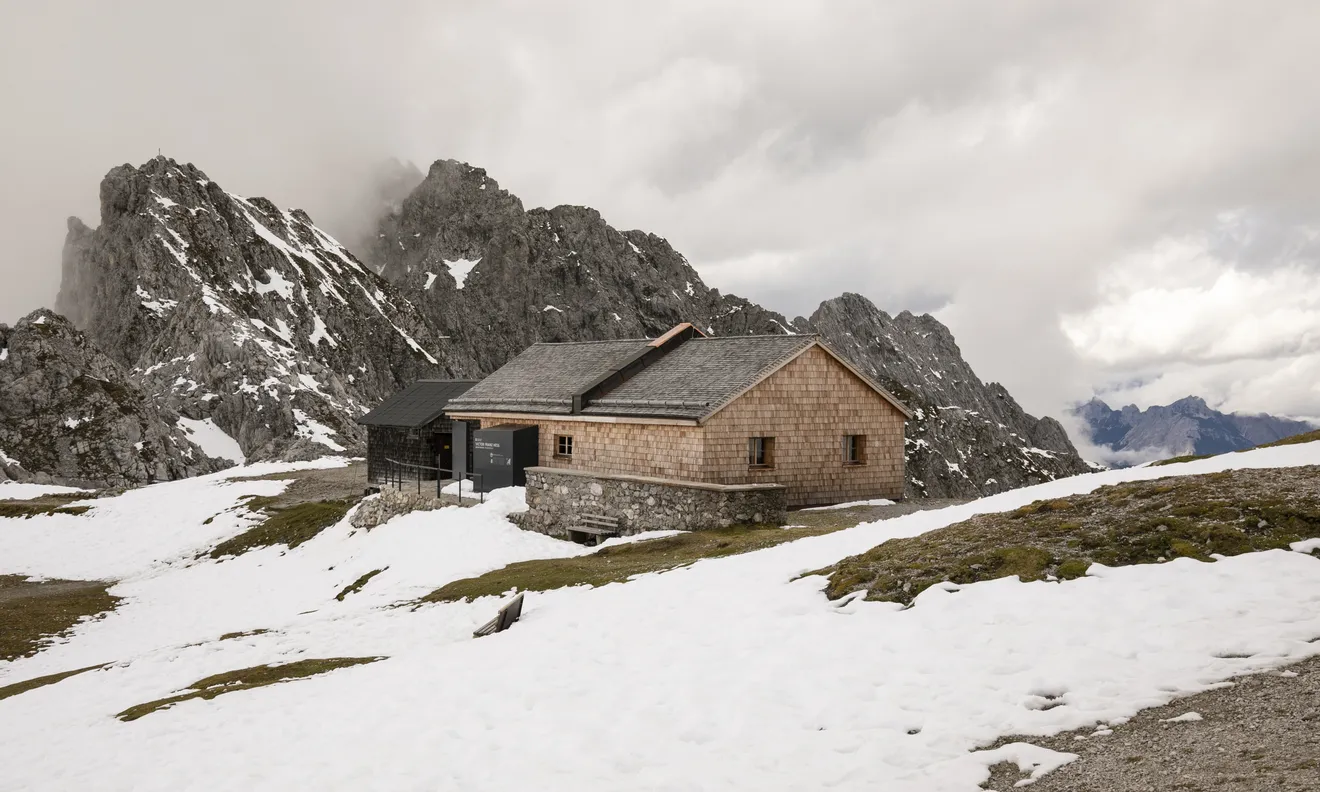AdministrationA
Author: University of Innsbruck
After a conception and reconstruction phase of several years, the
Victor Franz Hess observatory on the Hafelekar mountain above
Innsbruck was officially presented to the public on 29th September 2022. On
this occasion, the European Physical Society awarded the station the
distinction of "EPS Historic Site".
The research site was
renovated by the University of Innsbruck with the support of the City of
Innsbruck and the “Nordkettenbahnen”, the railway and cable cars which
make the hut easily accessible, and transformed into a new attraction
high above the roofs of the city, at more than 2,300 metres above sea
level. The new concept offers visitors the opportunity to get to know
the person Victor Franz Hess and his research as well as the phenomenon
of cosmic radiation through multimedia presentations. During the opening
ceremony, the EPS, represented by Past President Rüdiger Voss, awarded
the site the distinction of an EPS Historic Site, the third of its kind
in Austria and the first outside Vienna. "Victor Franz Hess did amazing
things for science and the University of Innsbruck is very proud of its
former professor. Today, members of our physics institutes are
continuing this successful tradition with their groundbreaking research
on quantum physics, ion physics and astroparticle physics. The newly
designed observatory on the Hafelekar gives all visitors an
insight into the pioneering work of Victor Franz Hess and the
fascinating world of physics. We invite all those interested to take
advantage of this opportunity and combine the joy of nature with
learning about the history of the natural sciences," said Tilmann Märk,
Rector of the University of Innsbruck and himself a distinguished
physicist.

Rüdiger Voss, former President of the European Physical Society (right), unveils the EPS Historic Site Victor Franz Hess observatory at Hafelekar
together with Rector Tilmann Märk (middle) and Mayor Georg Willi (left) - image: EPS/Gina Gunaratnam
Experience research
With the
redesign of this unique research site, the exterior of the hut was
restored to its historical condition. To this end, the roof was renewed
and the entire building was covered with wooden shingles. But it was
also a matter of making the research work and the person Victor Franz
Hess easy and understandable for all visitors to the Hafelekar and
making it possible to experience it from the outside all year round. In a
video installation, visitors can now get to know the researcher Hess as
well as immerse themselves in the world of cosmic rays. Inside the hut,
a showroom has been set up for expert visitors, in which the stages of
Victor Franz Hess's life as a researcher are documented.
Rays from outer space
As
early as 1912, Victor Franz Hess discovered cosmic rays during daring
balloon flights. For a long time, he was searching for a place at high
altitude that was suitable for the continuous measurement of the
high-energy rays. He found what he was looking for in the construction
hut of the Nordkettenbahn on the Hafelekar. In the 1930s, there was a
great deal of activity there. After Hess received the Nobel Prize for
Physics in 1936, the most renowned scientists of the time visited the
observatory. This place also helped other researchers to make
groundbreaking discoveries. On photographic plates exposed here,
Marietta Blau and Hertha Wambacher observed for the first time in 1937
how a particle of the cosmic rays shattered an atomic nucleus. In the
1960s and 1970s, a neutron monitor and muon detectors were installed.
This enabled the researchers to measure two types of particles contained
in the cosmic rays individually and to gain important insights.
Now,
the Victor Franz Hess observatory on the Hafelekar is not only a
historical site, but still a place of research. Unlike in the past,
however, the results of the corresponding detectors are no longer
analysed on site: Today, the measurement data is sent directly and
digitally to the different research groups.

The Victor Franz Hess observatory was awarded the EPS Historic Site designation on 29th October 2022 - image: Eva Fessler
Original press release in German: https://www.uibk.ac.at/de/newsroom/2022/sanierte-victor-franz-hess-messstation-eroffnet/
translated with DeepL and validated by the University of Innsbruck.